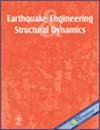Real-Time Hybrid Simulation With EGO-Based Online Model Updating
Abstract
Real-time hybrid simulation (RTHS) integrates numerical simulation and physical experiment to provide an effective and efficient technique for large- or full-scale testing in size-limited laboratories. Real-time hybrid simulation with model updating (RTHSMU) further expands RTHS beyond the laboratory capacities. Numerical substructure parameters are corrected by model updating based on test data acquired from the experimentally tested physical substructure. Structures with multiple similar critical components can then be tested in a more economical and efficient way. This study presents a new model updating method for RTHSMU based on efficient global optimization (EGO). Kriging meta-model is used to construct the complex relationship between constitutive parameters and structural response errors. EGO and moving window techniques are integrated to identify model parameters to achieve efficient adaptive sampling with minimal computational cost. A two-story steel moment resisting frame with self-centering viscous dampers is used to experimentally verify the efficacy of the proposed method. Compared with widely used unscented Kalman filter, the proposed method has advantages of ease of use and shows similar or better performance. Identified parameters from the proposed method are further shown to effectively improve the accuracy of structural responses under different ground motion excitations.

 求助内容:
求助内容: 应助结果提醒方式:
应助结果提醒方式:


